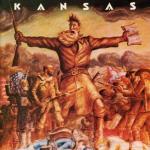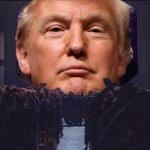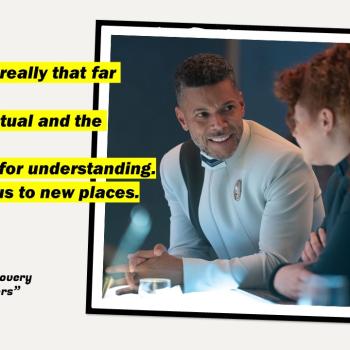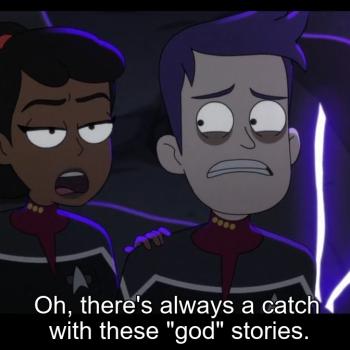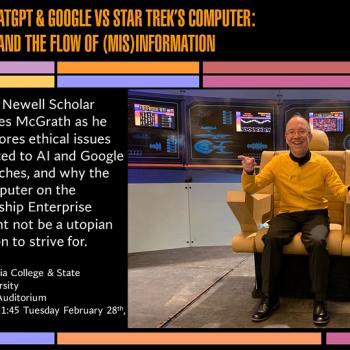I am long overdue to blog about the return of Star Trek: Discovery. I would have done so sooner if it had been clear that the first episode, called “That Hope Is You, Part 1,” was not really the first episode of a two-parter in the traditional sense. The second episode of the season, “Far From Home,” is simply the introduction to the season from a different perspective, with both in essence picking up where the previous season ended. I will explain that further in what follows, which includes spoilers.
The new season sees Michael Burnham successfully reach the year 3188 in the future, and her overjoyed reaction as life signs are detected. Control had not wiped out all biological life. Their plan seems to have worked.
Now in the future, however, and unable to reach the Discovery, she finds herself in a challenging situation. Her phaser is referred to as an “antique.” She is challenged on the ripping of holes in in spacetime by making her own wormhole. “You think that’s a good idea?!” The Federation, we learn, is gone, and Burnham is categorized (due to her wearing of a uniform) as one of the “true believers who get worked up about the old days.” Or as it is also put to her, “You believe in ghosts.” The Federation collapsed a long time ago in something called “The Burn” when “one day the galaxy took a hard left.” As more details are provided we discover that dilithium unexpectedly and suddenly destabilized and exploded. All this is history but not ancient history. It happened roughly 100-120 or so years earlier. To this Burnham responds by saying that the Federation is not warp drives but a vision and belief in it. Her new acquaintance named Book nonetheless tells her to take off her badge. True believers who act like the Federation is still around attract unwanted attention and trouble, it seems.
Book has a remarkable ability to communicate with other life forms. As he shows his ability in this area Burnham asks him, “Were you praying?” His reply is, “Something like.” It turns out that he is himself a different sort of “true believer.” He is saving members of a species called transworms. There is no Federation to enforce the endangered species act. But Book has a connection to living things and empathy for this cause. His family are poachers, killers, but he explains that in what might be attributed to the universe trying to balance things out, every so often someone like him turns up in their gene pool.
The mention that “all time travel technology was destroyed after the temporal wars” makes one wonder where that might lead. Is that a connection with Enterprise, perhaps? Having connected with the pilot and brought back Capt. Christopher Pike, it would be great to see Enterprise be next, not least because Discovery began in between Enterprise and the original series.
At the end we find out what something we saw at the beginning indicated, which I didn’t mention because when viewers first see it we don’t know what we are looking at. There is still a system set up to monitor for signals. It is what is left of a Federation subspace relay. The person who monitors it only detects two Federation ships. There is no sign of Discovery. He goes on to admit that he is not a Starfleet officer, for the simple reason that there was no one left to commission him. He is not an official member but a “true believer.” He asks her to do him the honor of commissioning him. She says that they need a communications officer and asks him to do her the honor of accepting the commission.
Many things about the episode are reminiscent of David Brin’s famous story that became the movie The Postman. Like the U. S. Postal Service, here Starfleet is the thing that no longer exists officially yet is still an incredibly powerful idea. Some of the phrases used to sum this up right at the end are powerful and inspiring: “Hope is a powerful thing.” “Sometimes it’s the only thing.” “Our numbers are few. Our spirit is undiminished.”
Episode 2 of the season is called “Far From Home” and not, as we had been led to expect, “That Hope Is You, Part 2.” It picks up the thread of Discovery, which comes through the wormhole and crashes on a planet that we learn “never had a proper name.” There the crew of the Discovery, out of communication with Burnham just as she was in the last episode with them, discovers that the galaxy is now something like a “wild west” in the absence of the Federation. They too exemplify its values even if the organization is but a memory. They too encounter people who live in hope, as well as others who scoff at “true believers” as well as time travelers who show up as a relic of a bygone era.
The episode ends as Discovery and Burnham manage to get in touch with one another, and we learn that Burnham actually came through the wormhole a year earlier than Discovery’s arrival.
I look forward to seeing where this season takes things, having shifted of members of Starfleet from a time before the original series into a future with more advanced technology than on any other Star Trek series and yet in which the Federation is at best a shadow of its former self. It may provide a perfect opportunity to do what the show has been doing since its first season: bringing the values and vision of Starfleet into the center of focus. For those like me who are interested in the intersection of religion and science fiction, the aspect of being a “true believer” in the values of a Federation that is no more deserves attention. It has long been clear to many of us that Gene Roddenberry’s humanist vision of the future and also the fandom of Trekkies that embrace the values of Starfleet and seek to live by them deserve to be considered at the very least quasi-religious. Now we’ll get to see those features explored further within the fictional narrative of Star Trek itself.


